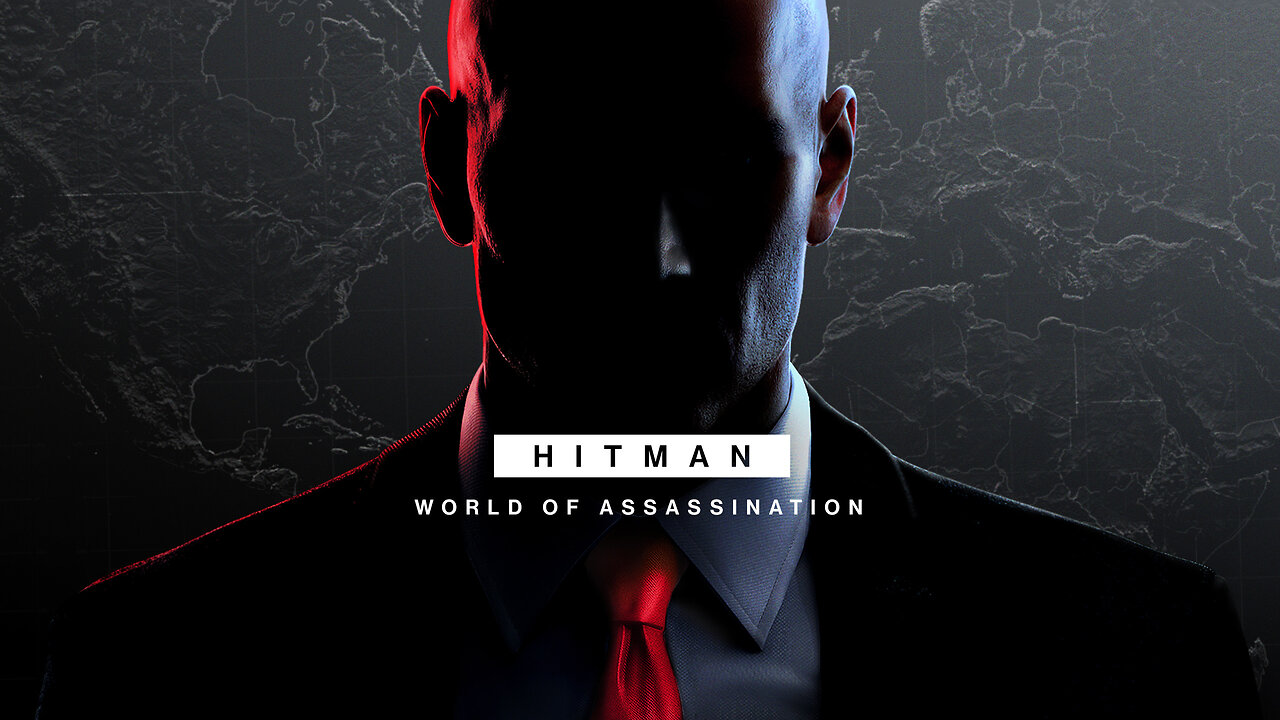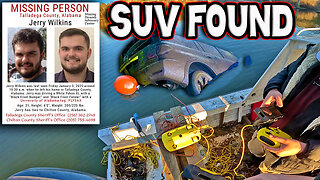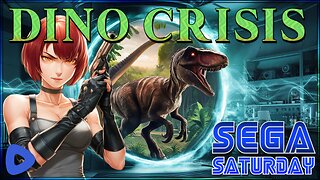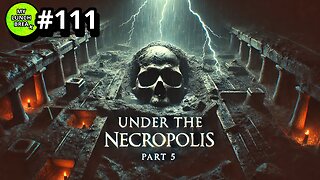Premium Only Content

The ENTIRE Hitman Story... So Far...2023
Hitman 3 debuted Jan. 20, 2021, on PS4, PS5, Xbox One, Xbox Series X, Nintendo Switch, PC, and Google Stadia. The game concludes IO Interactive's World Assassination Trilogy that began in 2016. But it will also mark Agent 47's eighth full game in a series that began in 2000 with Hitman: Codename 47 and includes spinoff titles like Hitman Go and Hitman: Sniper. The games have evolved considerably over the past 21 years. And Agent 47, their bald, barcoded protagonist, has been through a lot. Like other titles in the series, Hitman 3 will focus on stealth-oriented exploration of sandbox-style level, giving the player an almost unlimited number of ways to sneakily bump off their targets. But Hitman 3 will also delve into the clone assassin's origins, in ways that connect with the very first game in the series. Casual Hitman 3 players and even series veterans might not know everything about Agent 47's backstory, so here is the entire Hitman timeline explained.
Fans of the Hitman franchise are aware that Agent 47 is a cloned assassin who kills high-profile targets for cash, but some may not be familiar with exactly why he was created or where he comes from. His origins are explained in the series's first game, Hitman: Codename 47.
Agent 47's origins really begin with a German doctor named Otto Wolfgang Ort-Meyer. Dr. Ort-Meyer was obsessed with genetic manipulation and perfecting the human form. In the 1950s, Dr. Ort-Meyer left his medical career and joined the French Foreign Legion, where he met and befriended four other criminals: Lee Hong, Pablo Belisario Ochoa, Frantz Fuchs, and Boris Jegorov.
During their service, Dr. Ort-Meyer had the idea to create a genetically engineered super-soldier. Dr. Ort-Meyer eventually returned to civilian life. He relocated to Romania and ran a mental asylum, maintaining a secret lab in the basement where he performed his genetic experiments. Dr. Ort-Meyer and his four associates provided the genetic material for a series of clones. Originally, the clones were intended to be organ donors for this group, now known as the "Five Fathers," but they quickly proved their usefulness as assassins.
Although 47's origin story has been partially known since 2000, Hitman developer IO Interactive waited until the 2016 series relaunch to further explore the cloned assassin's birth, childhood, and early years. 2018's Hitman 2 finally covered these events, as did the Agent 47: Birth of the Hitman comic book miniseries from the same year.
Agent 47 was born Sept. 5th, 1964. Dr. Ort-Meyer raised him along with several other cloned children in his secret basement lab underneath the asylum. Many games in the series portray 47 as an inhuman loner, but as a child, 47 exhibited a softer side. He adopted an escaped lab rabbit as a pet, and later befriended another boy, named 6. In their early adulthood, the two boys escaped the asylum. In order to quell 47's rebellious nature, Dr. Ort-Meyer injected him with a serum that erased his memory, then told him that he'd murdered his own best friend.
Hitman 2 also revealed that a young 47 and 6 participated in a training mission in which they killed the parents of Diana Burnwood, who would go on to be 47's longtime handler.
Like Agent 47 himself, Hitman: Codename 47 was essentially a prototype version of a concept that would be perfected later. The first game in the Hitman series debuted as a PC-only title in 2000. While it established the series' core stealth mechanics and introduced major recurring characters like Diana Burnwood, it otherwise had little in common with recent titles.
Codename 47's prologue begins in 1998, when Dr. Ort-Meyer allows 47 to escape the asylum, then flashes forward to his first missions with the International Contract Agency, the shadowy assassin syndicate and 47's main employer during the series. (The interim period, during which a young Diana Burnwood and Erich Soders recruit 47 into the ICA and he trains to be an assassin, is eventually covered in 2016's Hitman.)
Agent 47 eliminates four primary targets in the game, some of whom can only be defeated in multi-stage missions. The four targets turn out to be four of the Five Fathers, and the client who hired the ICA was Dr. Ort-Meyer. Agent 47 returns to the asylum and finishes off his final creator. But first, he has to defeat several copies of 48, a superior clone of himself. Like Agent 47 himself, Hitman: Codename 47 was essentially a prototype version of a concept that would be perfected later. The first game in the Hitman series debuted as a PC-only title in 2000. While it established the series' core stealth mechanics and introduced major recurring characters like Diana Burnwood, it otherwise had little in common with recent titles. The next game wouldn't debut for three years, but the 2007 novel Hitman: The Enemy Within filled in some of the intervening years in 47's life. The Enemy Within delves further into the ICA and the secretive world of high-stakes assassination. In the novel, a rival French organization called Puissance Treize, or "Power 13," attempts to topple the ICA from the inside. Diana Burnwood is implicated in the conspiracy at one point, but 47 and Burnwood turn the tables and eliminate the conspirators, which include Puissance Treize's new leader, Pierre Douay, as well as a Greek shipping tycoon named Aristotle Thorakis. Two years after Silent Assassin, Hitman: Contracts premiered in April 2004 on PC, PS2, and Xbox. This was a relatively shorter game that used many of Silent Assassin's core mechanics. The story begins in a rundown Paris hotel room, where 47 is recovering from a gunshot wound in the stomach received during an assassination gone wrong. As he drifts in and out of consciousness, he remembers several of his previous missions, which play out as the game's levels.
While some of these missions are brand new, including the murder mystery of "Beldingford Manor" and the gleefully depraved "The Meat King's Party," some were remakes of missions from Hitman: Codename 47, making them available to console players for the first time. The recreated missions included the entire Lee Hong assassination sequence, as well as the eerie "Traditions of the Trade" mission. The first mission of the game also details how 47 escaped the Romanian asylum of his childhood, evading multiple S.W.A.T. teams. Hitman: Blood Money, which bridged the 6th and 7th console generations, released in 2006 on PS2 and PS3, Xbox and Xbox 360, as well as PC. Blood Money was the first Hitman game in the series that brought 47's missions to North America, and it took 47 all the way to the top of American politics.
As 47 eliminated targets across the U.S., another ICA rival called The Franchise emerged, which eliminated all ICA agents except for 47 and Diana Burnwood. At the end of the game, 47 manages to stop a Franchise assssination of the President of the United States. Burnwood then appears to double-cross 47, injecting him with poison and handing his corpse over to the Franchise to finally end the conflict. But at 47's funeral, the poison is revealed to be a sedative, and he rises from the grave and wipes out the Franchise for good.
Blood Money is still considered one of the best titles in the Hitman franchise, and currently has
The period between Blood Money and the next Hitman title, Absolution, spans about five years. This time period in 47's biography is partly covered in the novel Hitman: Damnation. Written by Raymond Benson, Damnation is the second Hitman novel so far. Picking up in 2011, Diana Burnwood has grown disillusioned with the ICA, (for reasons that are further revealed in Absolution). She appears to abandon 47 in the middle of a mission in Nepal, which ends with him severely injured. A disgusted 47 quits the ICA and works as a freelancer, proving that even the world's best assassin can still have a rough patch.
The novel introduces Benjamin Travis, Burnwood's rival within the ICA who then lures 47 back into the agency. An American televangelist named Charlie Wilkins then hires 47 to eliminate American presidential candidate Dana Linder so he can run in her place. Wilkins then orders a hit on himself so he can eliminate 47 and keep him quiet, but 47 kills Wilkins instead.Hitman: Absolution debuted in 2012 on PS3 and Xbox 360. This time, the game begins with 47 appearing to double cross Diana Burnwood, shooting her in her Chicago home. Agent 47's new ICA handler, Benjamin Travis, then tasks him with recovering an asset named Victoria, a teenage girl who's another genetically modified assassin.
Refusing to force her into the life of an assassin, 47 instead helps Victoria escape. Eventually, it's revealed that Travis created Victoria without ICA approval, and ordered 47 to eliminate Burnwood to keep it quiet. Instead, 47 only pretended to shoot her. Burnwood and 47 eliminate Travis and help Victoria escape to a normal life.
While it did tell an emotionally driven story that explored 47 as a character, it also included many divisive features that IO Interactive's installments would later abandon, including more linear level design and an enemy detection system that was limited by a charger bar. Absolution was also Square Enix's final game as Hitman's publisher. The ensuing relaunch of the series would take things in a very different direction.
In 2016, IO Interactive debuted the reboot of the Hitman franchise on PS4, Xbox One, PC, Linux, Mac, and Google Stadia. It had a new name, simply titled Hitman, and a new episodic release structure. This time, new missions would only be added to the game every few months, rather than all at once. Hitman distilled the franchise and its ever-expanding storyline into its core elements: open-world sandbox-style levels that encourage experimentation and lots of replays. The delays between level releases were meant to encourage players to return to the same locations and discover more. Therefore, the missions themselves were more developed and the story elements were minimized in this installment.
Picking four years after Absolution, Hitman finds 47 and Diana Burnwood back at the ICA carrying out a series of hits for a mysterious customer known only as the Shadow Client. Eventually, all of the targets are revealed to be agents of Providence, yet another shadowy organization in the Hitman universe. At the end of the game, a Providence operative approaches Burnwood and offers to reveal information about 47's connection to her past.
-
 1:42:59
1:42:59
Game On!
14 hours ago $3.53 earnedTop 10 Super Bowl Bets You Can't Afford To Miss!
23.3K3 -
 2:17:02
2:17:02
Tundra Tactical
18 hours ago $15.57 earnedTundra Nation Live : Shawn Of S2 Armament Joins The Boys
104K16 -
 11:00:11
11:00:11
tacetmort3m
1 day ago🔴 LIVE - SOLO RANK GRINDING CONTINUES - MARVEL RIVALS
169K3 -
![Shadows Of Chroma Tower, Alpha Playtest [Part 1]](https://1a-1791.com/video/fwe2/1d/s8/1/5/Q/U/n/5QUnx.0kob-small-Shadows-Of-Chroma-Tower-Alp.jpg) 13:29:21
13:29:21
iViperKing
22 hours agoShadows Of Chroma Tower, Alpha Playtest [Part 1]
141K6 -
 54:05
54:05
TheGetCanceledPodcast
19 hours ago $13.40 earnedThe GCP Ep.11 | Smack White Talks Smack DVD Vs WorldStar, Battle Rap, Universal Hood Pass & More...
129K20 -
 13:37
13:37
Exploring With Nug
23 hours ago $8.78 earnedSUV Found Underwater Searching For Missing Man Jerry Wilkins!
88.8K4 -
 2:58:21
2:58:21
xBuRnTx
18 hours ago1st Warzone Stream Online
104K11 -
 6:10:21
6:10:21
JdaDelete
1 day ago $23.38 earnedDino Crisis - Sega Saturday
165K6 -
 23:22
23:22
MYLUNCHBREAK CHANNEL PAGE
1 day agoUnder The Necropolis - Pt 5
128K62 -
 2:26:11
2:26:11
Jewels Jones Live ®
2 days agoWINNING BIGLY | A Political Rendezvous - Ep. 108
178K51